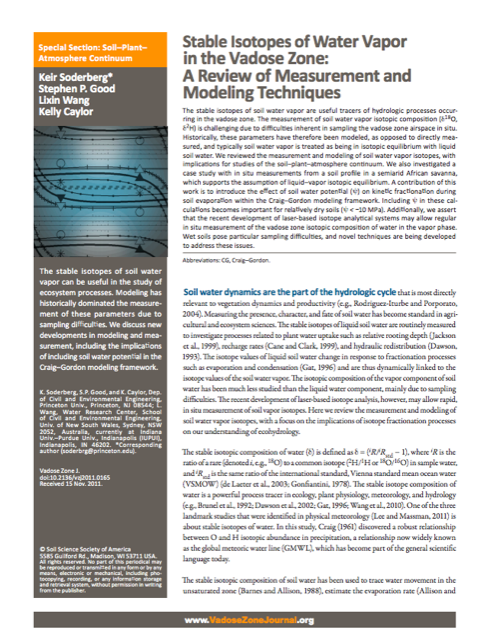Stable isotopes of water vapor in the vadose zone: A review of measurement and modeling techniques

*Soderberg, K., *Good, S.P., *Wang, L., Caylor, K.K. (2012) “Stable isotopes of water vapor in the vadose zone: A review of measurement and modeling techniques”, Vadose Zone Journal, doi:10.2136/vzj2011.0165.
The stable isotopes of soil water vapor are useful tracers of hydrologic processes occurring in the vadose zone. The measurement of soil water vapor isotopic composition (δ18O, δ2H) is challenging due to difficulties inherent in sampling the vadose zone airspace in situ. Historically, these parameters have therefore been modeled, as opposed to directly measured, and typically soil water vapor is treated as being in isotopic equilibrium with liquid soil water. We reviewed the measurement and modeling of soil water vapor isotopes, with implications for studies of the soil–plant–atmosphere continuum. We also investigated a case study with in situ measurements from a soil profile in a semiarid African savanna, which supports the assumption of liquid–vapor isotopic equilibrium. A contribution of this work is to introduce the effect of soil water potential (ψ) on kinetic fractionation during soil evaporation within the Craig–Gordon modeling framework. Including ψ in these calculations becomes important for relatively dry soils (ψ < −10 MPa). Additionally, we assert that the recent development of laser-based isotope analytical systems may allow regular in situ measurement of the vadose zone isotopic composition of water in the vapor phase. Wet soils pose particular sampling difficulties, and novel techniques are being developed to address these issues.
